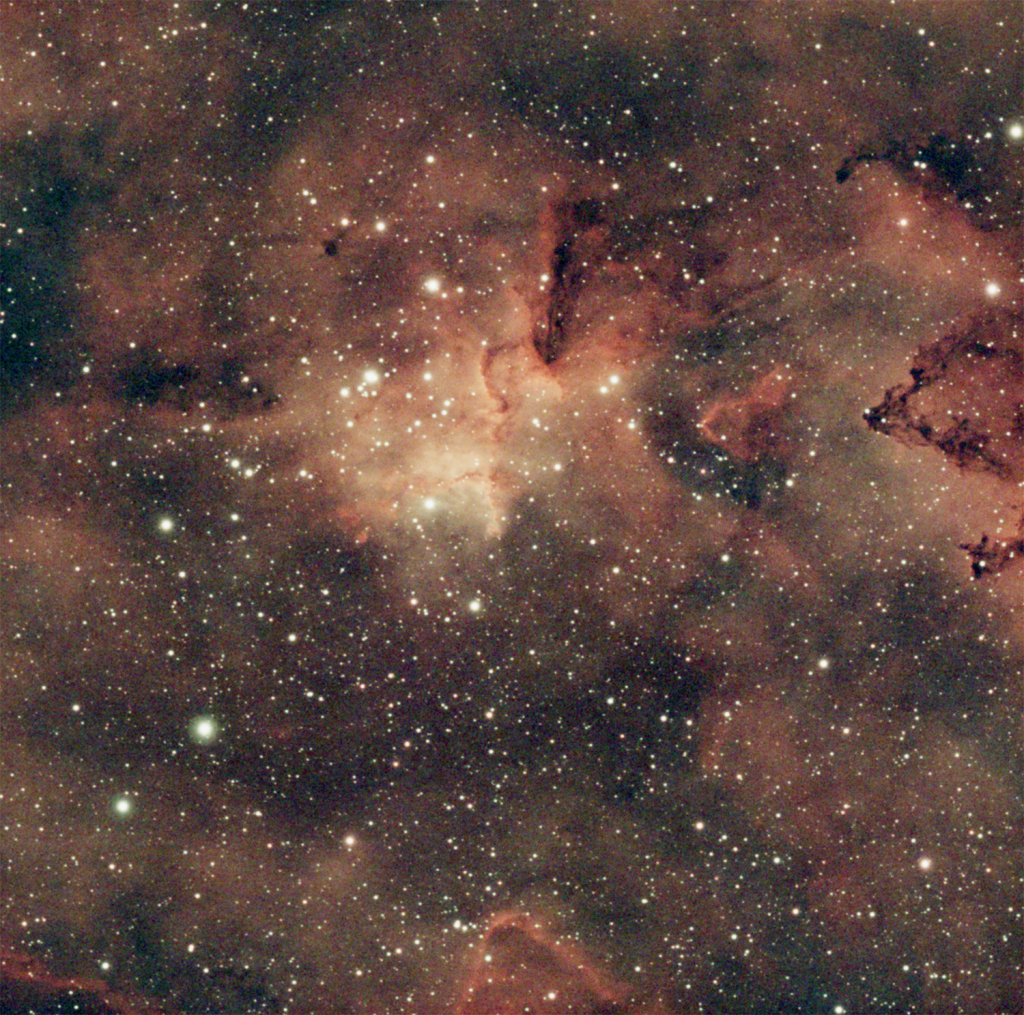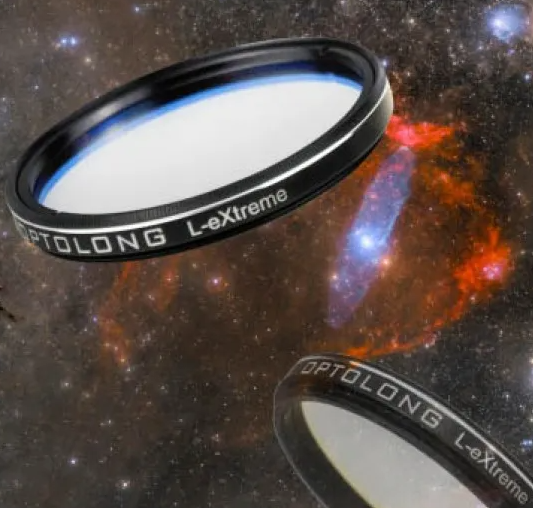Optolong Dual-Band L-eXtreme Filter
I had read many reviews of this filter, all of which were good – and in fact it is an amazing filter. It captures huge amounts of Ha and OIII data, blocking out light pollution and reducing noise…. however, there are a few thing to consider:
- Longer exposure times: It can take a bit of setting up. Because such a small amount of signal gets through the filter, processes like auto focusing and plate solving take a little bit longer. I was typically using 5 second exposures with other filters, with the L-eXtreme I need around 15 seconds in Sequence Generator Pro to auto focus.
2. Halos around brighter stars: This appears to be a common issue and seems to link to the OIII channel.
There seems to be a host of theories on the astro forums about why the halos appear – in summary it seems to be mostly the blue stars, which are brighter and it’s the OIII data channel which is affected. Some people have mentioned it might be reflections onto the filter if it’s too close to the sensor or even due to imaging under bright moonlight – although that’s when its most commonly used!. I might try and experiment with a few variations and see if I can get to the bottom of it.
Here is my first image with the L-eXtreme:

See the below video for removing/reducing the halos in Photoshop – it’s fairly simple.

